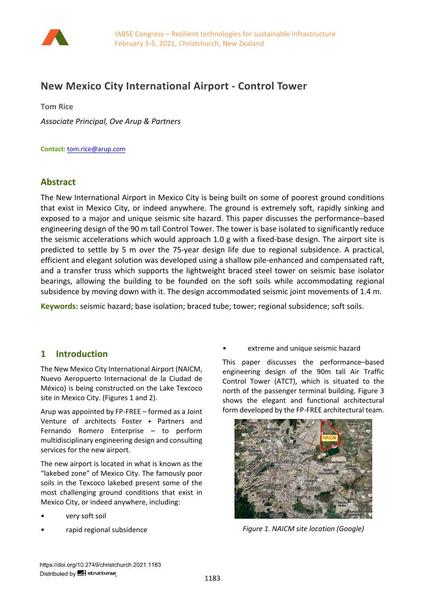New Mexico City International Airport - Control Tower

|
|
|||||||||||
Détails bibliographiques
| Auteur(s): |
Tom Rice
(Associate Principal, Ove Arup & Partners)
|
||||
|---|---|---|---|---|---|
| Médium: | papier de conférence | ||||
| Langue(s): | anglais | ||||
| Conférence: | IABSE Congress: Resilient technologies for sustainable infrastructure, Christchurch, New Zealand, 3-5 February 2021 | ||||
| Publié dans: | IABSE Congress Christchurch 2020 | ||||
|
|||||
| Page(s): | 1183-1193 | ||||
| Nombre total de pages (du PDF): | 11 | ||||
| DOI: | 10.2749/christchurch.2021.1183 | ||||
| Abstrait: |
The New International Airport in Mexico City is being built on some of poorest ground conditions that exist in Mexico City, or indeed anywhere. The ground is extremely soft, rapidly sinking and exposed to a major and unique seismic site hazard. This paper discusses the performance–based engineering design of the 90 m tall Control Tower. The tower is base isolated to significantly reduce the seismic accelerations which would approach 1.0 g with a fixed-base design. The airport site is predicted to settle by 5 m over the 75-year design life due to regional subsidence. A practical, efficient and elegant solution was developed using a shallow pile-enhanced and compensated raft, and a transfer truss which supports the lightweight braced steel tower on seismic base isolator bearings, allowing the building to be founded on the soft soils while accommodating regional subsidence by moving down with it. The design accommodated seismic joint movements of 1.4 m. |
||||
| Mots-clé: |
tour
|
||||
